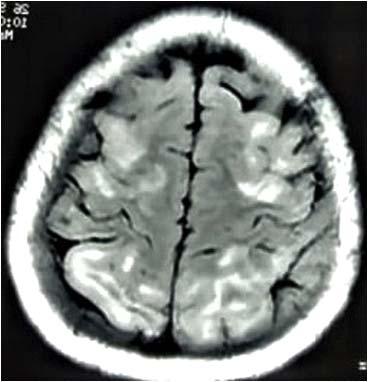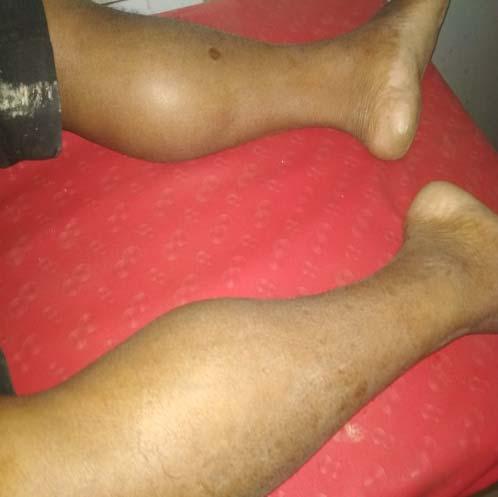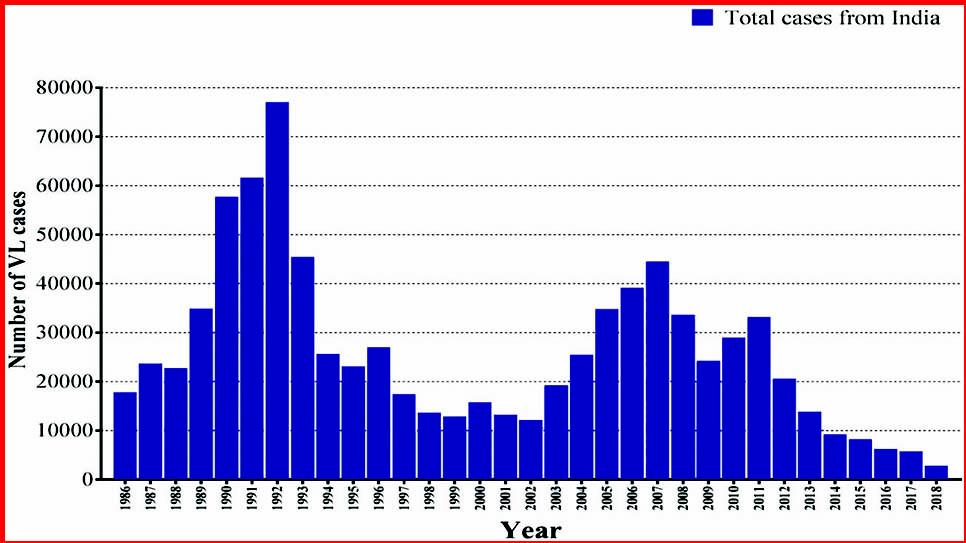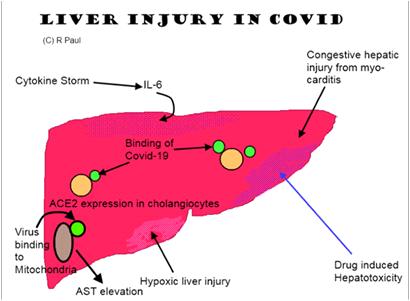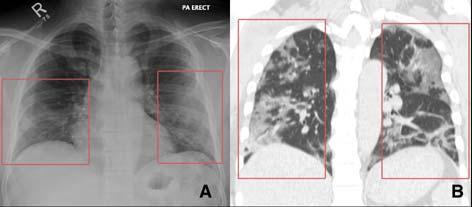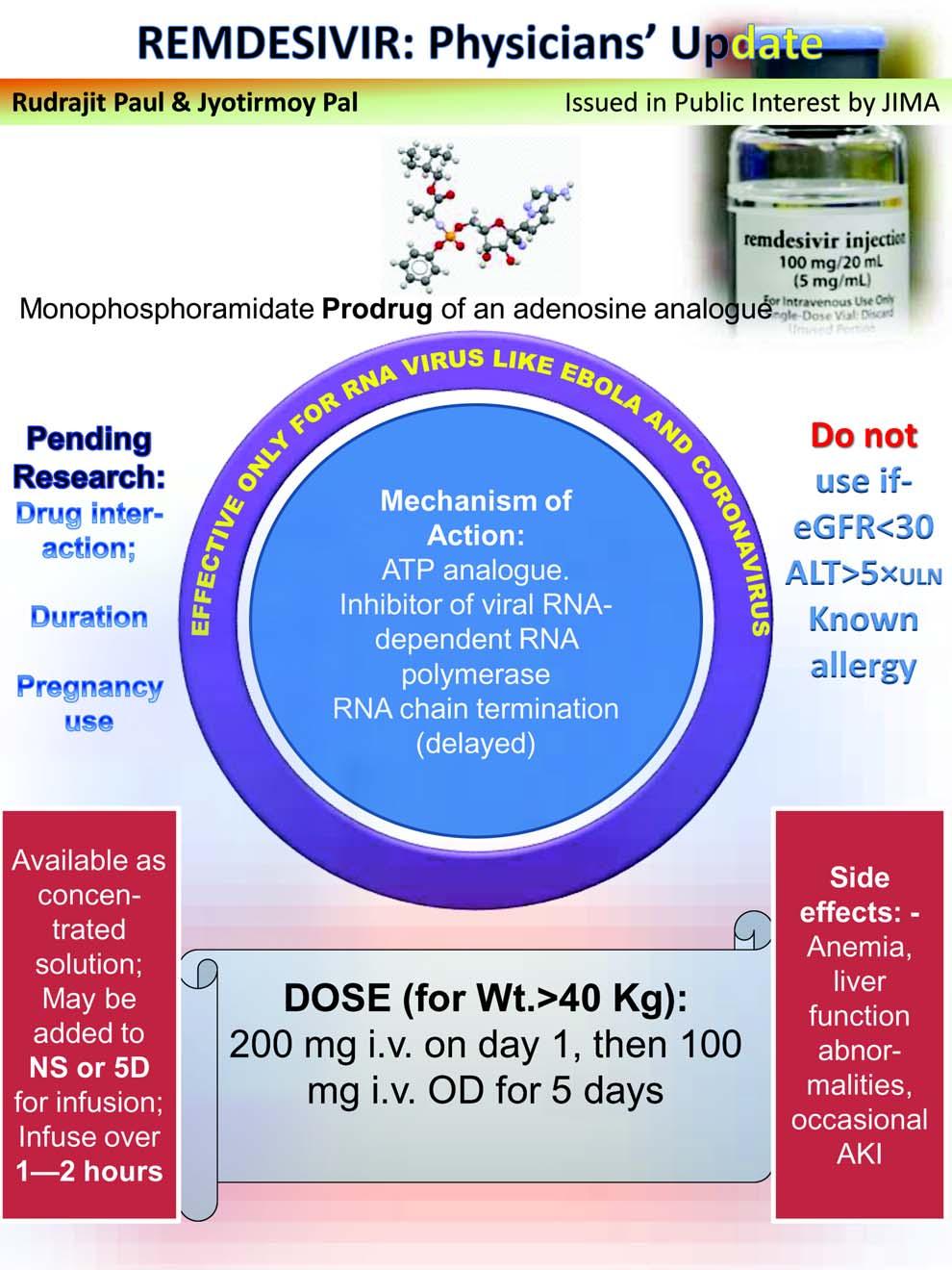
19 minute read
Rudrajit PaulWhy and How?
JOURNAL OF THE INDIAN MEDICAL ASSOCIATION, VOL 118, NO 06, JUNE 2020
Medical History
Advertisement
The Epidemic Diseases Act of India : What, Why and How?
Rudrajit Paul
Since the Epidemic Diseases Act has been invoked in India during the current Covid-19 pandemic, all doctors should have some idea about this law and should know the historical perspective in which it was formulated. But first, the provisions of this law are quoted verbatim here.
THE EPIDEMIC DISEASES ACT, 1897 ACT NO. 3 OF 1897 1 [4th February, 1897.]
An Act to provide for the better prevention of the spread of Dangerous Epidemic Diseases.
WHEREAS it is expedient to provide for the better prevention of the spread of dangerous epidemic disease; It is hereby enacted as follows:— 1. Short title and extent.—(1) This Act may be called the Epidemic Diseases Act, 1897. 2 [(2) It extends to the whole of India except 3 [the territories which, immediately before the 1 st November, 1956, were comprised in Part B States]] 4 5 ** * * * 6 2.Power to take special measures and
prescribe regulations as to dangerous
epidemicdisease.—(1) When at any time the 7 [State Government] is satisfied that 7 [the State] or any part thereof is visited by, or threatened with, an outbreak of any dangerous epidemic disease, the 8 [State Government], if 9 [it] thinks that the ordinary provisions of the law for the time being in force are insufficient for the purpose, may take, or require or empower any person to take, such measures and, by public notice, prescribe such temporary regulations to be observed by the public or by any person or class of persons as 9 [it] shall deem necessary to prevent the outbreak of such disease or the spread thereof, and may determine in what manner and by whom any expenses incurred (including compensation if any) shall be defrayed. (2) In particular and without prejudice to the generality of the foregoing provisions, the 7 [State Government] may take measures and prescribe regulations for— 10 * * * * * (b) The inspection of persons travelling by railway 73 or otherwise, and the segregation, in hospital, temporary accommodation or otherwise, of persons suspected by the inspecting officer of being infectedwith any such disease. 11 * * * * * [2A. Powers of Central Government.—When the Central Government is satisfied that India or any part thereof is visited by, or threatened with, an outbreak of any dangerous epidemic disease and that the ordinary provisions of the law for the time being in force are insufficient to prevent the outbreak of such disease or the spread thereof, the Central Government may take measures and prescribe regulations for the inspection of any ship or vessel leaving or arriving at any port in 2 [the territories to which this Act extends] and for such detention thereof, or of any person intending to sail therein, or arriving thereby, as may be necessary.] 3. Penalty.—Any person disobeying any regulation or order made under this Act shall be deemed to have committed an offence punishable under section 188 of the Indian Penal Code (45 of 1860) (see below) 4. Protection to persons acting under Act.—No suit or other legal proceeding shall lie against any person for anything done or in good faith intended to
[1. This Act has been amended in its application to— (1) the Punjab by the Epidemic Diseases (Punjab Amendment) Act, 1944 (Punjab Act 3 of 1944); in East Punjab by
East Punjab Act 1 of 1947: (2) the C. P. and Berar by the C. P. and Berar Epidemic Diseases (Amendment) Act, 1945 (C. P. and Berar Act 4 of 1945).
The Act has been extended to— (1) the whole of Madhya Pradesh by M.P. Act 23 of 1958 (when notified). (2) the transferred territories of Punjab by Punjab Act 8 of 1961. (3) in Dadra and Nagar Haveli (w.e.f. 1-7-1965) by Reg. 6 of 1963, s. 2 and Sch. (4) to Lakshadweep (w.e.f. 1-10-1967) : vide Reg. 8 of 1965, s. 3 and Sch. (5) Union territory of Pondicherry by Act 26 of 1968, s. 3 and Sch.
The Act has been repealed in its application to Bellary District by Mysore Act 14 of 1955. 2. Subs. by the A.0. 1950. 3. Subs. by the Adaptation of Laws (No. 2) Order, 1956 for
be done under this Act.
JOURNAL OF THE INDIAN MEDICAL ASSOCIATION, VOL 118, NO 06, JUNE 2020
“Part B States”. 4. The word “and” rep. by Act 10 of 1914, s. 3 and the Second Schedule. 5. Sub-section (3) rep. by s. 3 and the Second Schedule, ibid. 6. For Notifications issued under this section, see different local Rules and Orders. 7. Subs. by the A.O. 1937, for “G.G. in C.” 8. Subs., ibid., for “India”. 9. Subs., ibid., for “he”. 10. Paragraph (a) omitted, ibid. 11. Sub-section (3) omitted by Act 38 of 1920, s. 2 and the First Schedule]
Section 188 of IPC:Disobedience to order duly
promulgated by public servant
Whoever, knowing that, by an order promulgated by a public servant lawfully empowered to promulgate such order, he is directed to abstain from a certain act, or to take certain order with certain property in his possession or under his management, disobeys such direction, shall, if such disobedience causes or tends to cause obstruction, annoyance or injury, or risk of obstruction, annoyance or injury, to any person lawfully employed, be punished with simple imprisonment for a term which may extend to one month or with fine which may extend to two hundred rupees, or with both; and if such disobedience causes or trends to cause danger to human life, health or safety, or causes or tends to cause a riot or affray, shall be punished with imprisonment of either description for a term which may extend to six
months, or with fine which may extend to one
thousand rupees, or with both.
However, after the law was invoked this year, it was felt that some provisions were inadequate and also, there were repeated reports of severe violence against doctors all over the country. So, the Indian government decided to quickly amend this law.
Amendment to the Epidemic Act:
The Epidemic Diseases (Amendment)
Ordinance, 2020 was promulgated on April 22, 2020. The Ordinance amends the Epidemic Diseases Act, 1897. The Act provides for the prevention of the spread of dangerous epidemic diseases. The Ordinance amends the Act to include protections for healthcare personnel combatting epidemic diseases and expands the powers of the central government to prevent the spread of such diseases. Key features of the Ordinance include:
Definitions: The Ordinance defines healthcare service personnel as a person who is at risk of 74 contracting the epidemic disease while carrying out duties related to the epidemic. They include: (i) public and clinical healthcare providers such as doctors and nurses, (ii) any person empowered under the Act to take measures to prevent the outbreak of the disease, and (iii) other persons designated as such by the state government.
An ‘act of violence’ includes any of the following acts committed against a healthcare service personnel: (i) harassment impacting living or working conditions, (ii) harm, injury, hurt, or danger to life, (iii) obstruction in discharge of his duties, and (iv) loss or damage to the property or documents of the healthcare service personnel. Property is defined to include a: (i) clinical establishment, (ii) quarantine facility, (iii) mobile medical unit, and (iv) other property in which a healthcare service personnel has direct interest, in relation to the epidemic.
Powers of the central government: The Act specifies that the central government may regulate: (i) the inspection of any ship or vessel leaving or arriving at any port, and (ii) the detention of any person intending to travel from the port, during an outbreak. The Ordinance expands the powers of the central government to regulate the inspection of any bus,
train, goods vehicle, ship, vessel, or aircraft leaving or arriving at any land port, port or
aerodrome. Further, the central government may regulate the detention of any person intending to travel by these means.
Protection for healthcare personnel and
damage to property: The Ordinance specifies that no person can: (i) commit or abet the commission of an act of violence against a healthcare service personnel, or (ii) abet or cause damage or loss to any property during an epidemic. Contravention of this provision is punishable with imprisonment between
three months and five years, and a fine between
Rs 50,000 and two lakh rupees. This offence may be compounded by the victim with the permission of the Court. If an act of violence against a healthcare service personnel causes grievous harm, the person committing the offence will be punishable with imprisonment between six months and seven years, and a fine between one lakh rupees and five lakh rupees.
These offences are cognizable and non-bailable.
JOURNAL OF THE INDIAN MEDICAL ASSOCIATION, VOL 118, NO 06, JUNE 2020
It must be remembered that this is an ordinance. So, it will be valid only for six months. This is not permanent.
These are the laws applicable to the Indian Public during an epidemic, if this law in invoked.
But how did this Law come into being?
The advent of the epidemic :
The first case of Bubonic plague in India was notified in September, 1896 from Mandvi. Then, it was in the Bombay presidency (now, the place is in Gujarat). This first official case was recorded on 23/09/1896 from a house of Nowroji Hill Slums near Masjid Bridge in Mandvi. The credit for this discovery goes to an Indian physician named Acacio Gabriel Viegas, who was a general practitioner in Mandvi. The plague bacillus was probably carried from Hong Kong by the rats aboard merchant ships. Bombay presidency was then a densely populated area due to rapid growth of industries and international trade routes. People were living in closely spaced “chawl”s and mud houses, which were the preferred breeding sites of rats. Also, just a year previously, in 1896, there had been a severe famine in wide areas of Mid and South India. This famine had also driven the rodents towards localities in search of food. Thus, the disease spread like wildfire and soon, in and around Bombay, there were 1900 deaths per week.
The British reaction :
At about 4 months into the epidemic, on January 19, 1897 Queen Victoria gave a speech in the British parliament in which she asked the government to take all measures necessary to curb this pestilence. To quote directly from her speech that day:
“Plague has also made its appearance in the seaport towns of Bombay and Karachi, and, notwithstanding the precautions adopted by the local authorities, shows no signs of decrease. I have directed my Government to take the most stringent measures at their disposal for the eradication of the pestilence.”
About ten days after this speech, the Epidemic Act bill was introduced on 28/1/1897, Thursday, in the Council of the Governor- General of India in the then Indian capital of Calcutta. This was a cabinet-level council consisting of 6 members. Till 1909, all the members of this council were appointed by the British crown. It was introduced by council member, John Woodburn. He was a civil servant, who had just received the Knights Commander honours on 1 st 75 January, 1897. He was an erudite person, who would later go on to become president of the Asiatic society. On this day, 28 th January, he requested the Viceroy, 9 th Earl of Elgin, to stop all business and introduce this bill as a priority. He said,
The bill was placed to give special powers to the local government bodies to deal with the disease. The following comment about Indians makes the attitude of the colonial rulers clear:
Thus, right from its inception, this Act had a presumption that the “filthy” habits of the Indians were responsible for plague and this Act would be used to destroy that filth. There were some comments on the authoritarian nature of the bill but the British members of the council agreed that harsh measures were required to control the epidemic. There was just one day of debate. The bill was sent to the select committee headed by James Westland. He was another distinguished civil servant, who had served in Bengal for many years and who had received the order of the Star of India. The very next Thursday, 4/2/1897, the bill was passed and turned into law with immediate effect.Thus, the British Parliament was not involved in making of this Law.The main concern of the government was that people from Bombay were spreading the disease everywhere, especially the British capital of Calcutta.
There were two Indian members of the council: Rahimtula Muhammad Sayani and Maharaja of Darbhanga,Lakshmishwar Singh. They raised a feeble protest that the whole process of passing the bill had been hurried. But the British members succeeded in convincing them that the situation demanded urgent measures. In fact, the Maharaja also acceded to this view later. This Maharaja of Darbhanga , Lakshmiswar Singh (Fig 1), was a highly respected Indian landowner who served in many government committees in his time and was also made Knight Commander of the Most Eminent Order of the Indian Empire. Rahimtula Muhammad Sayani(figure 2) was an Indian politician. He served as President of the Indian National Congress in 1896. He was in Viceroy’s Legislative Council from
1896 to 1898.
JOURNAL OF THE INDIAN MEDICAL ASSOCIATION, VOL 118, NO 06, JUNE 2020
did see the potential for abuse of this law in the hands of the bureaucracy. James Woodburn himself said, “I received a memorandum from the Editor of an intelligent and interesting native newspaper complaining that the Bill was being passed too hurriedly and 76 were to be made under the Bill.”
However, obviously such concerns were overruled in favour of authoritarian measures. Some pitfalls of the bill were still discussed. One Bengali Babu raised the issue of pilgrimage to Mecca. Rahimtula Muhammad Sayani said that the pilgrimage may be deferred till the threat had passed. The British members were unwilling to interfere in this regard. One more issue which was raised was: how to isolate women? At that time in India, most women were expected to live with their family and never live alone. So could the government separate womenfolk? Woodburn was adamant in this regard. He said,
“We could not allow the whole town to run the risk of plague infection merely because the source of that infection happened to be a woman”.
Fig 1 — Sir Lakshmeshwar Singh, Maharaja of Darbhanga Steps taken : Thus, the bill was quickly passed and made into law with immediate effect. Thus, this act, which would destroy the lives of millions of Indians in the coming months, was not formed by the British parliament, but by a mere council of members, none of whom had been elected by the public. The government formed many “plague committees” to deal with the epidemic. Many of these committees consisted of military personnel. The Sanitary conference of Venice was due to start in February of 1897. The British government wanted this law in force before that conference so as to counter the opposition of other European powers and boost its own image. At that conference, the British delegate informed the hall that the Epidemic act had been enforced in India and according to this Law, made Fig 2 — Rahimtula Muhammad Sayani • Pilgrimage to Mecca from India had been halted After a century, many shortcomings of this bill (to be discussed later in this article) are glaringly evident. But were those thought of at that time? There is very little evidence. But perhaps a few educated persons for one year On February 19, the British delegate also declared that various measures had been taken in India (Fig 3) The National Army Museum in London has many
conveyed no explanation Fig 3 — Excerpt from “Public Health Report” after 1897 convention. This declaration makes the of the Regulations that colonist nature of the Act evident

the following announcement: -
JOURNAL OF THE INDIAN MEDICAL ASSOCIATION, VOL 118, NO 06, JUNE 2020
documents and photographs of the role of the military during that epidemic in India.
At first, in Bombay, a municipal plague committee was formed from officers of the Indian Medical Service (IMS). By March 1897, many people in Bombay had died and a large number had fled the city. This was causing serious disruption to British trade and British ships from India were threatened with quarantine and rejection by many European countries like France. France even stopped import of leather goods from India.
Use of the Act in colonial times :
The Epidemic Act was already in place but how to use it? The Secretary of state for India, George Hamilton (conservative) was in favour of stringent measures while the Viceroy, Earl of Elgin wanted a cautious approach. But many British administrators in India were in favour of the Hamilton approach. For example, the Governor of Bombay wrote to Hamilton in January, 1897,
“The critical state of affairs was not due to the shortcomings of the city’s authorities, but to the unreadiness of the inhabitants, their great dislike and distrust of sanitary measures, and their fear of being separated from their families.”
Thus, their main attitude was to blame Indians for the disease. Also, the British were alarmed at the prospect of losing trade with other European nations and also, losing the glamour of European life in India.
In March, 1897 the IMS-led plague committee of Bombay was broken up and a new military led fivemember committee was formed. There was only one doctor, HP Dimmock. This committee enacted many severe measures like hosing down houses, rigorous searching of houses and detaining travellers. Since
the Epidemic Act was in place, no one could stop this committee from doing whatever unscientific
activity they thought appropriate. The Military were deployed to all native areas to carry out strict “disease control” measures. Thus, there was very little medical angle to these committees. But this is surprising because two of the greatest experts in medical science, Robert Koch and Richard Pfeiffer, had visited Bombay at that time but no plague committee (led by military generals) thought it necessary to seek their scientific advice. In fact, Robert Koch faced hostility from British officials because he was propounding the germ theory of diseases while the basic premise of bureaucrat-led plague committee was that dirty environment was the cause of plague. With this view, they went on spraying whatever disinfectant they could find. A historian notes, 77
‘The city was literally drenched in disinfectant solution’.
There were many discriminatory rules. For example, in Indian trains, third class passengers
were inspected on the platform, while second class passengers were inspected inside the
carriages and first class ones were exempted!In some areas, only those passengers ‘regarded by reason of their appearance, by symptoms or dirty conditions of their clothes and effects’ were forcibly inspected. To limit the crowd of religious fairs, government officials cancelled third class train tickets to those destinations, while first and second class passengers were allowed as usual. Since most of the influential thinkers and writers of India at that time (as is true even now) belonged to the privileged class and travelled first class, they were mostly unaffected by these British regulations. Hence, there is very little mention of these police brutalities in contemporary literature. Under this act, some areas of India started issuing documents on their own: the Madras presidency issued “plague passports” while Bengal presidency issued “plague inoculation certificates”. In some places, there was “plague-marking” of railway tickets for passengers who boarded the train from “infected” areas. All of these measures were violation of basic human rights. But probably, this attitude of Europeans towards their colonial subjects was considered normal at that time.
Naturally, such authoritarian measures were highly resented by the Indian public. We all know of the murder of WC Rand by the Chapekar brothers. But besides that, there were huge protests in Bombay with agitated mill workers attacking the Arthur Road Hospital when a female plague patient was kept in isolation there. Famous historian David Arnold mentions that in Delhi, there were placards threatening the British with another 1857-like rebellion.BalGangadharTilak warned the British of social unrest caused “by the inefficiency and iniquities of the bureaucrats”. When people in Pune were removed to unhygienic isolation camps, they formed “refugee struggle samity” to protest the squalor of those quarters. But colonial repression continued unabated. In response to the protests of people in the wake of Epidemic act, the Viceroy Elgin said, “with sword we conquered India and with sword shall we control and rule over it.”Bal Gangadhar Tilak was arrested and imprisoned for his
writings.
JOURNAL OF THE INDIAN MEDICAL ASSOCIATION, VOL 118, NO 06, JUNE 2020
Limitations of this law : -
• There is no definition of “epidemic” in this law. So, the bureaucracy can use it as they wish • It is mentioned that the law was enacted to prevent “dangerous epidemic disease”. But it does not define “danger”. • There is no mention of the duty of doctors in this law. In fact, this British law completely bypasses the role of doctors. • There is no mention of hierarchy of different essential workers working during an epidemic • The law was enacted at the time of plague epidemic and gives too much stress on travel restrictions. But there is no mention of other disease prevention measures • The law is just focussed on disease prevention but mentions nothing about diagnosis or treatment
Recommendations :
1. A proper law to curb the spread of epidemics in a democratic country should mention participation of all strata of the society 78
2. Physicians and men of science should be designated leaders in these times 3. Physicians should be given the power to act above bureaucracy in times of emergency 4. Measures to control any disease should involve voluntary participation by the free citizens of a free country and not coercion 5. A law on epidemic control should involve all aspects of medical science like prevention, diagnosis, treatment and research
REFERENCES
1 The Epidemic Diseases Act, 1897. Available online from https:/ /indiacode.nic.in/bitstream/123456789/10469/1/ the_epidemic_diseases_act%2C_1897.pdf 2 The Epidemic Diseases (Amendment) Ordinance, 2020.
Available online from https://www.prsindia.org/billtrack/ epidemic-diseases-amendment-ordinance-2020 3 Yadav S. Explained: 123 years ago, when bubonic plague led to country’s Epidemic Diseases Act. The Indian Express.
Available online from https://indianexpress.com/article/ explained/epidemic-disease-act-amended-coronaviruspandemic-bubonic-plague-healthcare-workers-6397400/ 4 Mehta A, Srivastava K, Shah A. Epidemic Diseases Act 1897 – Dusting an Old Cloak. Available online from https:// corporate.cyrilamarchandblogs.com/2020/03/epidemic
All figures used in this article are copyright free
Disclaimer
The information and opinions presented in the Journal reflect the views of the authors and not of the Journal or its Editorial Board or the Publisher. Publication does not constitute endorsement by the journal.
JIMA assumes no responsibility for the authenticity or reliability of any product, equipment, gadget or any claim by medical establishments/institutions/manufacturers or any training programme in the form of advertisements appearing in JIMA and also does not endorse or give any guarantee to such products or training programme or promote any such thing or claims made so after. — Hony Editor
diseases-act-1897-dusting-an-old-cloak/

